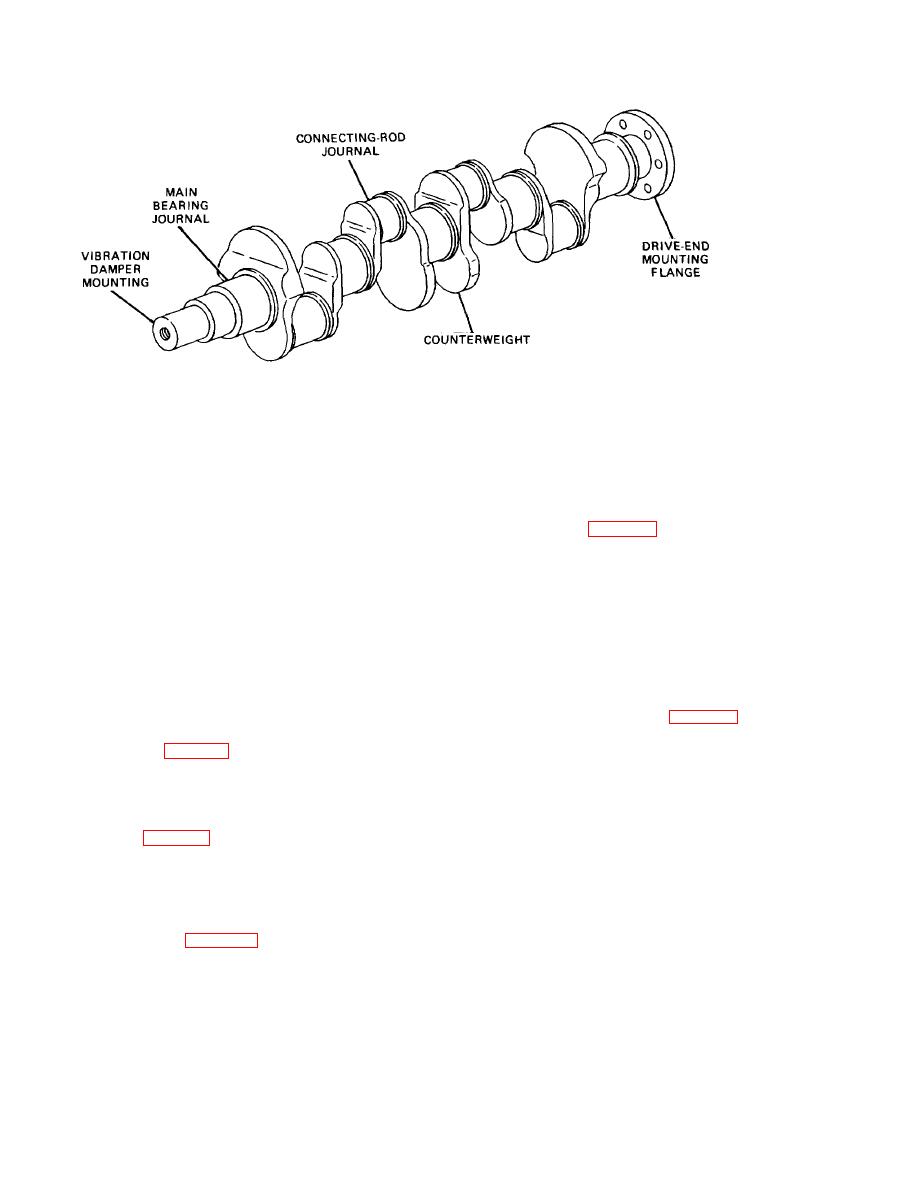
| Tweet |

Custom Search
|
|

|
||
 TM 9-8000
Figure 3-34. Crankshaft Construction.
vibration damper at the end of the crankshaft opposite
of the shells. When the halves are clamped together,
the output end will serve to absorb torsional vibration.
they form a precision bearing that will be a perfect fit for
There are a few variations of the vibration damper, but
a properly sized shaft. The bearing inserts and the
they all accomplish their task in basically the same
mating surface that hold them must be sized perfectly.
manner. They all employ a two-piece design. The
The insert merely slips into place and is held from turning
differences in design are in how the two pieces are
by the locating tab.
linked together. One type of damper links the pieces
c. Materials (Fig. 3-41). Most bearings begin with a
together by an adjustable friction clutch. Whenever a
sudden change in crankshaft speed occurs, it causes the
steel backing to give them rigidity. The lining then is
friction clutch to slip. This is because the outer section of
applied to the steel backing. The lining usually consists
the damper will tend to continue at the same speed. The
of an alloy of copper, tin, and lead. The lining also may
slippage of the clutch serves to absorb the torsional
be made of babbit. Babbit is a popular bearing material
vibration. Another type of damper links the two pieces
that is an alloy consisting of copper, tin, and antimony.
together with rubber. As the crankshaft speeds up, the
The lining thickness usually ranges from 0.002 to0.005
rubber compresses, storing energy. This serves to
in. (0.051 to 0.127 mm). The bearing then is coated with
minimize the effect of crankshaft speed increase. As the
either aluminum or tin to a thickness of approximately
crankshaft unwinds, the damper releases the energy
0.001 in. (0.025 mm).
stored in the compressed rubber to cushion the speed
d. Bearing Requirements (Fig. 3-42). Bearings must be
change in the other direction.
able to support the crankshaft rotation and deliver power-
e. Lubrication (Fig. 3-38). The crankshaft has internal
stroke thrusts under the most adverse conditions. A
drilled passages to supply lubrication to its bearings.
good bearing must have the following qualities.
3-10. Crankshaft Bearings.
subjected to tremendous forces from the thrust of the
power strokes. The bearings must be able to withstand
a. General (Fig. 3-39). The crankshaft is supported in
these loads without spreading out or cracking.
connecting rods are sup- ported on the crankshaft by the
(2) Corrosion. The bearing must be resistant to
rod bearings.
moisture and acids that always are present in the
TA233370
b. Construction (Fig. 3-40). Crankshaft bearings
are made as precision inserts. They simply slip into place
in the upper and lower halves
3-20
|
||
 |
||